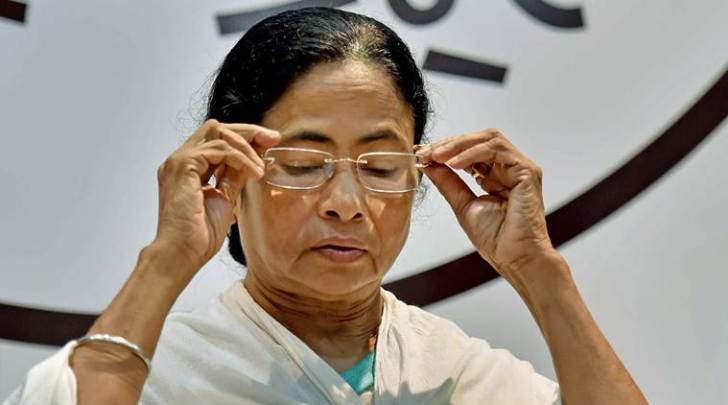Edited excerpts of Dr Amit Mitra’s interview with Economic Times (published on August 30, 2016)
What’s the mood among industrialists?
Everybody I met today, including private equity firms, multinational corporations, acknowledge the change that has happened in West Bengal. The growth of gross value added (GVA) in 2014-15 has been a little over 10% when India’s growth has been 7.3%.
1
Tell us what happened in the financial year 2015-16?
We are perhaps looking at GVA growth of as much as 12%, when India has been growing at least 3 to 4 percentage points less. In 2010-11, our state’s nominal GDP was Rs 4,61,000 crore. In 2014-15, it has doubled to Rs 8,00,000 crore, and in 2015-16, our revised figures are Rs 9,39,000 crore.
How did this happen? What were the drivers?
There are three major drivers. The first is the government expenditure which translates into Keynesian multiplier. During 2010-11(the last year of the communist government), West Bengal’s planned expenditure was little over Rs 14,650 crore. The actual planned expenditure in 2014-15, (under Trinamool) had touched Rs 39,893 crore. In 2015-16, it is Rs 54,000 crore. So from Rs 14,000 crore to Rs 54,000 crore – it is quite a jump.
What’s it spent on?
Capital expenditure within planned expenditure, which is asset creation, was a negative 26% in 2010-11 under the communist regime. We reversed it. It is actually six times of what it was in four years. What it simply means to me as an economist is that Keynesian multiplier on asset creating expenditure, which means cement, steel — the whole down-the-chain industry which creates Keynesian multiplier is approximately 4 times in India. One of the factors that’s debated in the West is when private expenditure is slow, public expenditure can trigger private investment.
One element of this is private expenditure and it gets attracted once they see GDP growth taking place in a stimulated economy and the dipstick tests show there’s a lot of energy in the economy. So, these numbers — of planned expenditure and capital expenditure — are the triggers. Whereas in communist rule, capital expenditure was at a negative 26% during their last year, and it was shrinking. Planned expenditure was a puny Rs 14,000 crore. A climb to Rs 54,000 crore in five years – this has never happened in any state to my knowledge. And no one knows about it.
Isn’t there a flipside to the public expenditure? The looming debt trap which West Bengal is facing, which Mamata Banerjee herself termed as a death trap…
The debt is phenomenal — the debt left behind by the communist government was Rs 2,00,000 crore. Its bonds or small savings matured, I’m not talking about interest. I’m talking just about repayment of principal amount. In five years, we repaid Rs 42,000 crore, which is all from the Rs 2,00,000 crore left behind by the CPI(M). What we have borrowed has not come back to maturity.
These are all 10-year debt which we repaid. The total amount we have borrowed during our regime is Rs 1,13,000 crore of which Rs 94,000 crore is for repayment and interest of that Rs 2,00,000 crore. Imagine, my last year’s repayment and interest was Rs 28,000 crore. This year, it is about Rs 33,000 crore. And the coming years when they borrowed the most in 2007-08, those bonds will come to haunt us.
Are your new borrowings at a lower cost?
At a much lower cost as we have borrowed from the market. We have borrowed at a much lower rate. At least 200 points difference. Having said so, our debt GDP ratio has come down.
How come?
Because GDP has grown phenomenally. So, while there’s no question that we are in a debt trap because we are essentially borrowing. Just Imagine, we have borrowed .Rs 1,13,000 crore of which Rs 94,000 crore has gone towards repayment and interest. We have thus borrowed for development about Rs 18,000 to Rs 19,000 crore in five years. So we haven’t borrowed much at all.
How did you fund the growth in GDP that you mentioned earlier?
Taxes have exactly doubled.
How did you manage to do that?
Tax collections went up from Rs 21,000 crore to almost Rs 43,000 crore in four years in our regime. We have implemented the largest e-taxation drive by any state in India during the period, and the central government has given us the highest award for that.
How does this e-taxation work?
Every part of the tax can only function transparently through the computer. For example, VAT registration and digitised signature cannot be done in paper. It has to be done compulsorily online. What did the government give you back? Dematerialised VAT certificate with digitised signature. Then the ease of doing business in the state.
Businessmen were complaining that they paid VAT and should be able to seek refund, but they don’t get it. So I said we’ll give you 90% of what you self-declare. Then I got information that some officer arrives at their offices — you know what that means. I’m perhaps the only finance minister in India who said on the floor of the house after consulting with the chief minister that no officer shall go to a dealer’s office without an official letter from the commissioner. Within three months, the loophole got plugged, and now it’s a perfect system.




